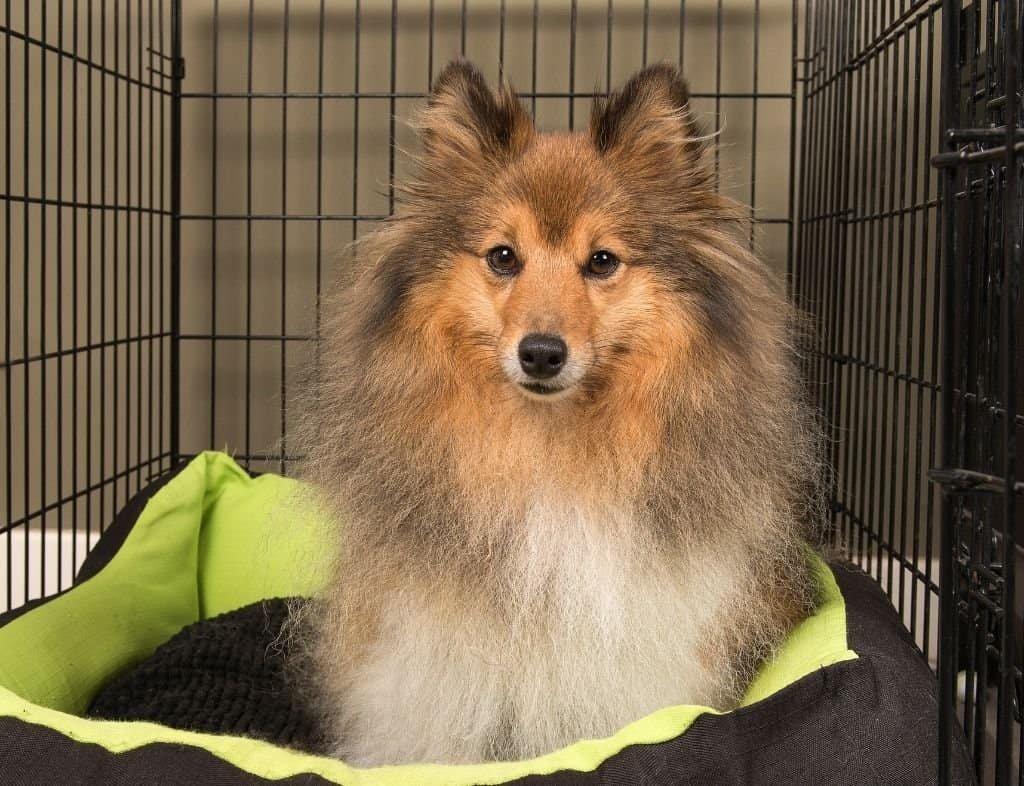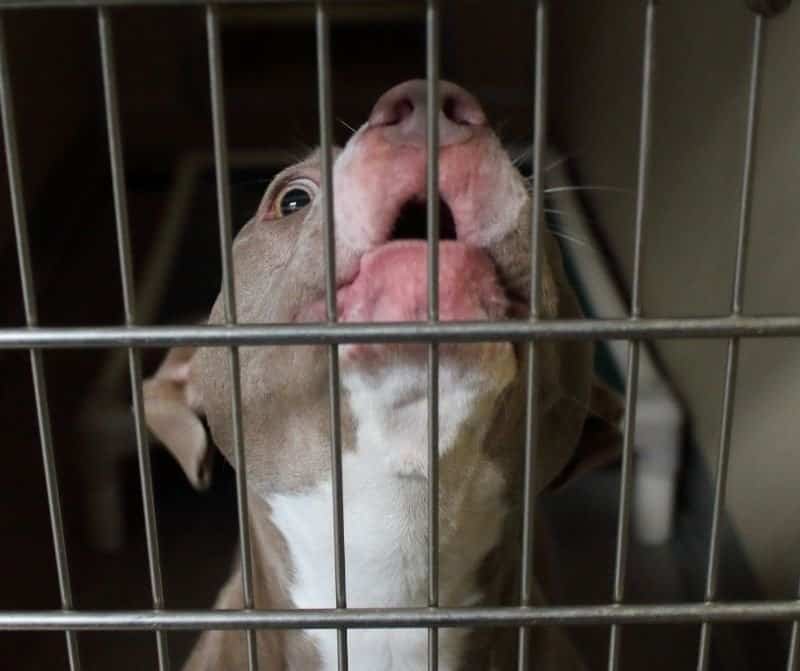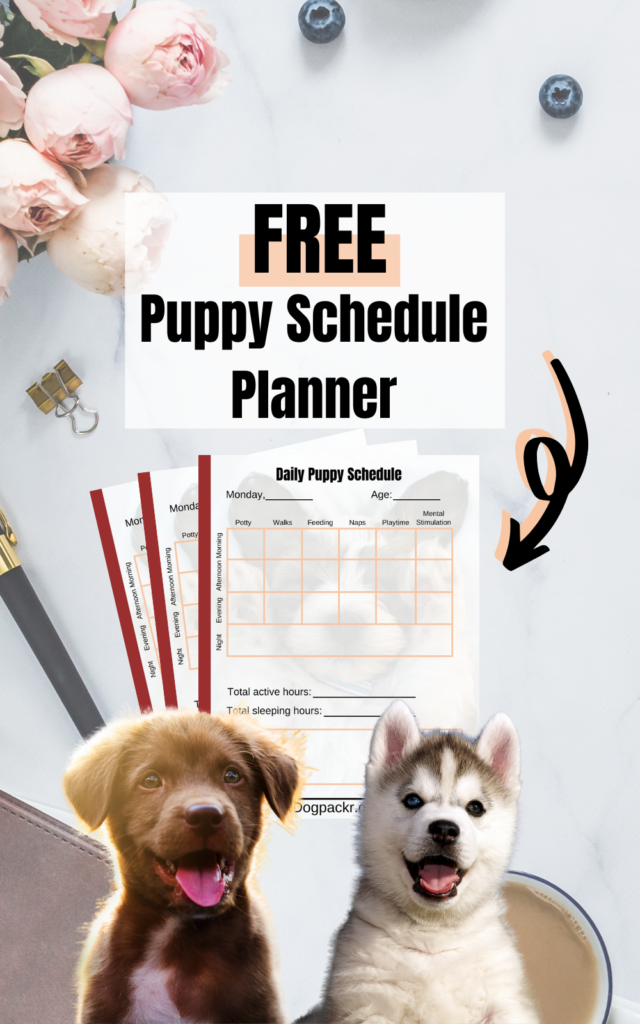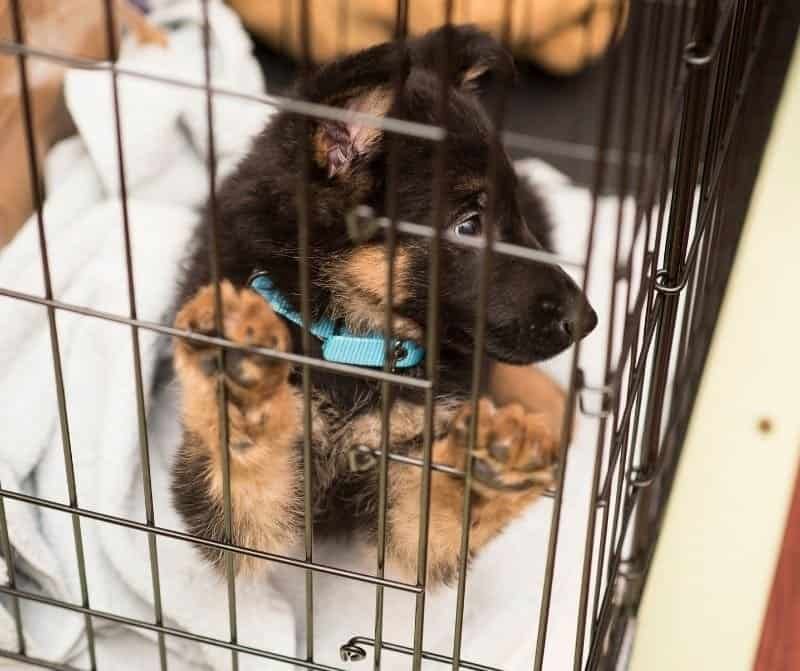Are you planning on crate training your dog? If you are, it’s important to know how to make your dog happy in his crate.
If you’re not sure how you can help your dog love his crate, there are a few things you can do. Check out these useful tips!
Table of Contents
How to make a dog happy in a crate
Crate training your dog is one of the best things you can do for him. Crates can provide your dog with a safe, comfortable space where he can hang out when he can’t be supervised.
But if your dog hates his crate, that makes using it much more difficult.
So what can you do? The good news is that there are lots of great ways to help your dog feel more comfortable and happy in his crate.
You might even be able to teach your dog to love his crate!
Before we get into all the great ways you can help your dog feel happier in his crate, make sure to check out these related articles:
- How to Crate Train a Dog Easily in 13 Steps
- 5 Tips for Crate Training Regression
- 11 Tips to Stop a Puppy from Peeing in the Crate
Start training very slowly
When it comes to doing any kind of training with your dog, the most important thing to do is to make sure that you’re taking it slow.
Patience and consistency are vital to positive reinforcement dog training. You never want to rush any kind of important training like this.
If you try to force your dog into his crate before he’s ready, he’s only going to build up negative associations with it. This isn’t going to make it easy to get him to love his crate.
Instead, make sure that you’re taking things slow. Go at your dog’s own pace, and don’t push him past his limits.
Make all the fun things happen in the crate
One of the best ways to help your dog learn to love his crate is to make all of his favorite things happen in it!
There are lots of fun things you can do with your dog in his crate. One example includes filling a Kong toy filled with treats and peanut butter and giving it to him in his crate.
You can also use the crate for playtime. There are lots of fun brain games you can play with your dog. Some of them can be modified a little bit so that your dog can play them in his crate!
If you need a little inspiration, make sure you take a look at these 10 brain games for dogs to play at home.
Feed him in the crate
Does your dog love eating? Most dogs do.
Because dogs love eating so much, this makes mealtimes a really great opportunity to build positive associations with the crate.
You can feed your dog all his meals in his crate to help him learn to love it.
The more you do this, the more excited and willing your dog will be to head into his crate.
You may have some questions related to your dog’s eating habits. Here are a few related articles for you to check out:
- Do Dogs Get Tired of the Same Food?
- 7 Tips to Stop a Dog from Begging for Food
- Best Dog Food Delivery Service for Fresh Cooked Food
Give him his favorite treats in the crate
Does your dog have a favorite type of treat? In dog training circles these are referred to as “high value” treats. These treats are the ones you want to use when you’re training for something difficult.
And crate training can be challenging! So it’s important to make sure that you’re doing everything you can to help your dog learn to love his crate.
Using his favorite treats can be a really effective way of forming positive associations.

One great thing you can try is hiding his treats around his crate. Put them under his blankets and let him sniff them out. This has the added benefit of getting your dog to work his brain a little bit while he’s in the crate.
Only give him his favorite toy in the crate
If your dog has a particular toy that he likes more than the others, you can use this to your advantage.
Only give your dog this toy when he’s inside his crate. This will get him to associate the crate with his favorite toy. In turn, this will help your dog feel happy when it’s time to head into his crate, maybe even a little excited!
Tire him out before sending him to his crate
A lot of bad behavior in dogs tends to stem from them being under stimulated or outright bored. Giving your dog enough exercise can help tire him out and keep him calm while he’s in his crate.
Remember, a tired dog is a happy dog! A tired dog will also be one that’s a little more relaxed and willing to rest in his crate.
There are lots of great ways you can tire him out. If you’re short on time and need to get your dog into his crate fast, check out these 11 tips to tire out a dog (quickly).
How do I get my dog to stop whining and crying in his crate?
A dog that’s whining or crying as soon as he gets into his crate can be annoying. It can also be pretty difficult to deal with.
But there are things you can do to help your dog feel a little more comfortable.
Before we get into these helpful tips, you might want to take a look at these related articles:
Make sure your dog gets enough physical and mental stimulation before the crate
It’s important for your dog’s overall health as well as his general behavior to give him enough exercise.
There are lots of really great ways that you can give your dog a little physical stimulation to make him calmer before heading into the crate.
One option is to go for a walk before it’s time to crate your dog. If you’re looking for a little extra information on walking, take a look at these related articles:
- How Many Walks Should a Dog Have a Day?
- How to Tell If Your Dog Is Tired of Walking
- How Long Can a Dog Walk in the Snow?
Even doing something fast like playing a few rounds of fetch or tug can help tire your dog out enough to relax him.
Take baby steps while training
Remember, crate training isn’t something that you want to rush. If you want your dog to feel comfortable in the crate and even learn to love it, you need to go at his pace.
Start small and work your way up. Don’t ever force your dog in when he doesn’t want to go. This will scare him and make him unwilling to go into the crate on his own.
Some dogs catch on to crate training quickly, and will soon learn that the crate is a nice space for them to hang out in.
It can take a little bit longer for other dogs. Just remember to be patient and consistent, and in time you’ll teach your dog to love his crate.
Let him out before he starts crying
One thing you really want to avoid when crate training a dog is to let him out while he’s crying.
It can be pretty annoying listening to a dog cry and whine. But if you let him out while he’s throwing a tantrum like this, that only teach him one thing. Whining will get him what he wants!
Instead, make sure that you’re letting him out of his crate before the crying even starts. You’ll be able to go longer and longer increments before he starts crying.
You might only be able to put him in for a few seconds at first. But the more you do this, the longer he’ll stay settled in his crate.
If you miss that moment, wait until he takes a break before you let him out
There may be some instances where you’re not able to let your dog out of his crate before he starts crying.
If your dog starts crying in his crate, don’t let him out. Instead, wait it out until there’s a break in the whining. It might take a while, but just be patient.
Eventually your dog will stop crying. Make sure that he’s quiet for at least a few seconds before you let him out of the crate.
Doing this will teach your dog that if he wants to get out of his crate, he’ll have to be calm and quiet!
Cover the crate with a blanket
Sometimes it can be frustrating for a dog to see everything going on around him outside the crate. It might be hard for your dog to be unable to leave his crate and join in all that activity!
There are a few things you can do about this. For example, you can move the crate into a quiet room far away from everything else.
You can also cover your dog’s crate with a blanket to help keep it dark and muffle outside noises. Doing this should help your dog relax a little more easily.
Play quiet music or white noise
If your dog is struggling to settle down in his crate, putting on some white noise sometimes helps.
There are a lot of dog-specific music and white noise playlists available on both YouTube and Spotify. Put on a playlist and see if this is something that helps your dog.
White noise and music can help to drown out any sounds that might be keeping your dog distracted in his crate.
Some specific genres of music can also be really helpful for getting your dog to settle down. For more information on dogs and music, this article can help: Do Dogs Like Music When They Are Alone?
Give him something to chew or lick
Dogs experience the world through their mouths. They have a very strong sense of smell, which is connected to their sense of taste.
Licking and chewing things can also help your dog relax. When your dog licks or chews, this makes his brain produce certain hormones like serotonin.
Serotonin is a feel-good hormone that helps to promote relaxation and wellbeing. So providing your dog with something to chew or lick can do a lot to help him settle!
Doing this also gives your dog a fun, tasty treat which will help him form even more positive associations with the crate.
Related topic: For dog training in general I highly recommend you get a program that walks you through step by step, such as Braintrainingfordogs. Certified dog trainer Adrienne Farricelli teaches you to train your dog to be the best dog he can by be using mental stimulation! Check out Dogpackr’s review to see if this is a fit for you!

Dog crate training FAQ
Do you have some questions about crate training a dog? Here are a few answers!
Do dogs get sad when you put them in their crate?
A lot of people think that crate training a dog is cruel. They believe that crating a dog is nothing but a punishment, and that dogs will get upset when they’re crated.
If you use your crate the wrong way, then your dog will probably be sad in his crate.
But if you crate train your dog properly, he will learn to love being in his crate.
One important thing to remember is that you shouldn’t leave your dog in his crate for too long. Ideally, he shouldn’t be in there for more than a couple of hours.
If you have to crate your dog while you’re at work and you work full-time, do consider hiring a dog walker. This will give your dog the chance to get out of his crate and stretch for a bit during the day.
What to do if your dog hates the crate?
Does your dog simply refuse to go into his crate? If your dog hates the crate, this can make things pretty challenging.
If your dog refuses to go into his crate completely, don’t give up. It might seem like you’ll never get your dog to like his crate, but there are things you can try.
It might just take a little extra patience and time. Remember, go slow. It might seem like you’re making no progress at all, but with patience and consistency, you’ll show your dog the crate is a nice place.
If you need a little extra advice, make sure you take a look at these articles:
Where to put the dog crate in the house?
One of the most important things to do when crate training your dog is to set the crate up in the right place.
When training your dog, set the crate up somewhere where he can see you. This will help him feel more comfortable and less afraid.
As your dog gets better and better with his crate, you might want to move it somewhere else. Put his crate somewhere quiet where he won’t be too distracted by the things happening around him.
If you’re crating him at night, your bedroom is another prime location for your dog’s crate.
Puppy crate training FAQ
You know how to crate train your dog, but what about your puppy? Here are a few common concerns you might have.
Should I put my puppy in his crate at night?
Are you wondering how to crate train a puppy at night?
Crating your puppy at night is a really good idea. It gives him a nice, cozy place to lie down and it helps to establish a good routine for both of you.
It will also keep your puppy from getting into anything he shouldn’t while you’re sleeping!
So if you haven’t started crate training your puppy yet, you might want to start.
Until what age should a dog sleep in a crate?
Crating your puppy at night can help to keep him safe and out of trouble during the night. But how long should you be doing this?
The answer to this question is however long you want. Some people let their dogs sleep outside of their crate once they’re housetrained or sleeping all the way through the night.
Other owners prefer to keep their dogs sleeping in the crate for their whole lives!
Ultimately, it just comes down to what your personal preference is. If it works for you and your dog, then keep doing it!
I don’t want to crate train my puppy
Crate training a puppy can be really beneficial. You don’t necessarily need to crate train a puppy, but there are lots of benefits to it that you might want to consider.
Crates can help to keep your puppy safe during the night. They can also be a really helpful part of your routine.
So, while sou don’t absolutely need to crate train a puppy, it’s definitely something that you should give some thought!
Conclusion
A crate can be a really helpful tool for both you and your dog. But if you want your dog to love his crate, make sure that you know ways to make him happy in it.
Remember all the above tips to help your dog love his crate!
*Disclosure: This post may contain affiliate links, meaning, I get a commission if you decide to make a purchase through one of my links, at no cost to you.






